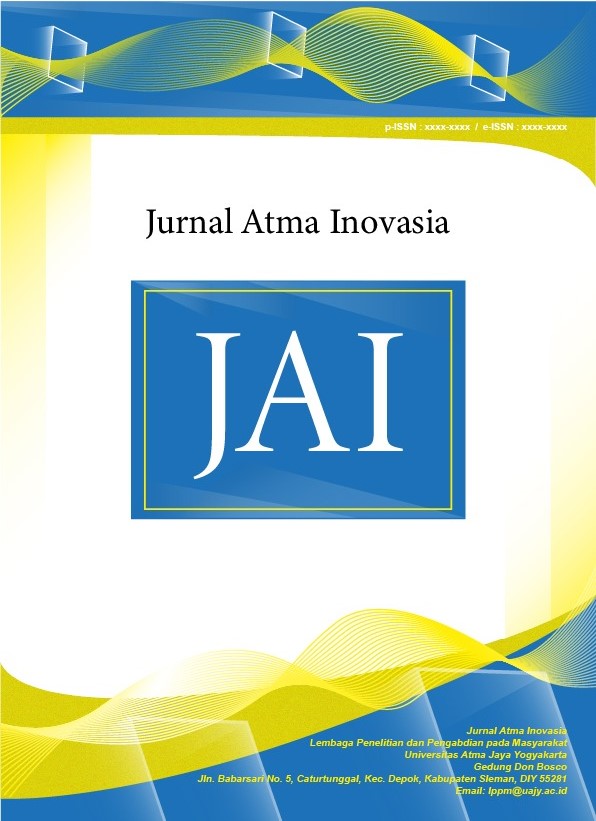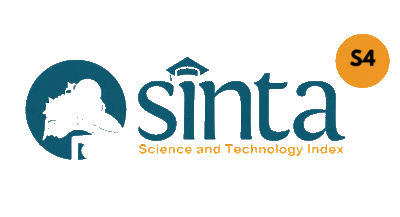Pengembangan Potensi Desa Wahyuharjo, Kapanewon Lendah, Kabupaten Kulon Progo
DOI:
https://doi.org/10.24002/jai.v3i4.5288Keywords:
Wahyuharjo Village, Village PotentialAbstract
KKN is an activity carried out by students as a form of service to certain village communities with their respective problems. The type of KKN program that is carried out is KKN Society or KKN which is carried out online. The location of the KKN was carried out in Wahyuharjo Village, Kapanewon Lendah, Kulon Progo Regency, Yogyakarta Special Region.. Kapanewon Lendah is one of the Kapanewon in the Special Region of Yogyakarta which has an astronomical location at 7° 93'22” south latitude and between 110° 23'08” East Longitude. Wahyuharjo is one of the villages in Kapanewon Lendah, Kulon Progo Regency, Yogyakarta Special Region which is located between Bumirejo and Tirtorahayu villages which has a residential area of 26.46 ha and an area of 101.84 ha of agricultural land. Wahyuharjo Village has various village potentials, especially in the field of natural wealth which if developed and utilized optimally will provide more benefits and benefits for the community. Based on the data we got during the KKN program, we also found that the people of Wahyuharjo Village also have handicrafts in the form of woven banana stems. So it can be concluded that the people of Wahyuharjo Village already have knowledge in terms of utilizing natural resources, so we want to provide wider knowledge and insight which aims to make the community more optimal in utilizing and developing the potential of natural resources owned by Wahyuharjo Village.References
Sumarwiyanto, A. Nurmahmud, and Y. Marwati, Kapanewon lendah dalam Angka 2021. Yogyakarta: BPS Kabupaten Kulon Progo, 2020.
“profil wilayah kalurahan,” 2019, 2019. http://wahyuharjo-kulonprogo.desa.id/index.php/artikel/2019/3/4/profil-wilayah-desa.
Anonim, “Profil Wilayah Kalurahan Wahyuharjo,” 2019. .
Anonim, “Profil Masyarakat Kalurahan,” 2021. .
Admindesa, “Potensi Desa,” 2016. .
M. Ali, “Pengaruh dosis pemupukan NPK terhadap produksi dan kandungan capsaicin pada buah tanaman cabe rawit (Capsicum frutescens L.),” J. Agrosains Karya Kreat. Dan Inov., vol. 2, pp. 171–178, 2015, [Online]. Available: http://uim.ac.id/jurnal/index.php/pertanian/article/viewFile/256/194.
L. Kurniasari, I. Hartati, and R. Ratnani, “Kajian Ekstraksi Minyak Jahe Menggunakan Microwave Assisted Extraction (Mae),” J. Momentum UNWAHAS, vol. 4, no. 2, p. 114974, 2008.
A. Krisnawati, “Kedelai sebagai sumber pangan fungsional,” Iptek Tanam. Pangan, vol. 12, no. 1, pp. 57–65, 2017.
I. W. Redi Aryanta, “Manfaat Jahe Untuk Kesehatan,” Widya Kesehat., vol. 1, no. 2, pp. 39–43, 2019, doi: 10.32795/widyakesehatan.v1i2.463.
M. Fathurohman, A. Y. Aprillia, A. T. K. Pratita, and V. F. Tenderly, “Diversifikasi produksi susu kedelai berbasis mikroalga autotrofik guna meningkatkan indeks nutraseutikal,” J. Apl. Teknol. Pangan, vol. 9, no. 2, pp. 70–76, 2020, doi: 10.17728/jatp.6150.
Anonim, “Profil Potensi Kalurahan,” 2021. .
L. Panen et al., “2 . Produksi Pertanian Tahun 2015-2020 3 . Luas Panen Padi dan Palawija per Kecamatan ( ha ) Tahun 2015-2020 4 . Produksi Panen Padi dan Palawija per Kecamatan ( Ton ) Tahun 2015-2020 5 . Kondisi Pertanian dan Perkebunan Tahun 2015-2020 6 . Data Rata - Ra,” pp. 1–29, 2020
Downloads
Published
Issue
Section
License
Copyright (c) 2023 Bartolomeus Galih Visnhu

This work is licensed under a Creative Commons Attribution-ShareAlike 4.0 International License.










